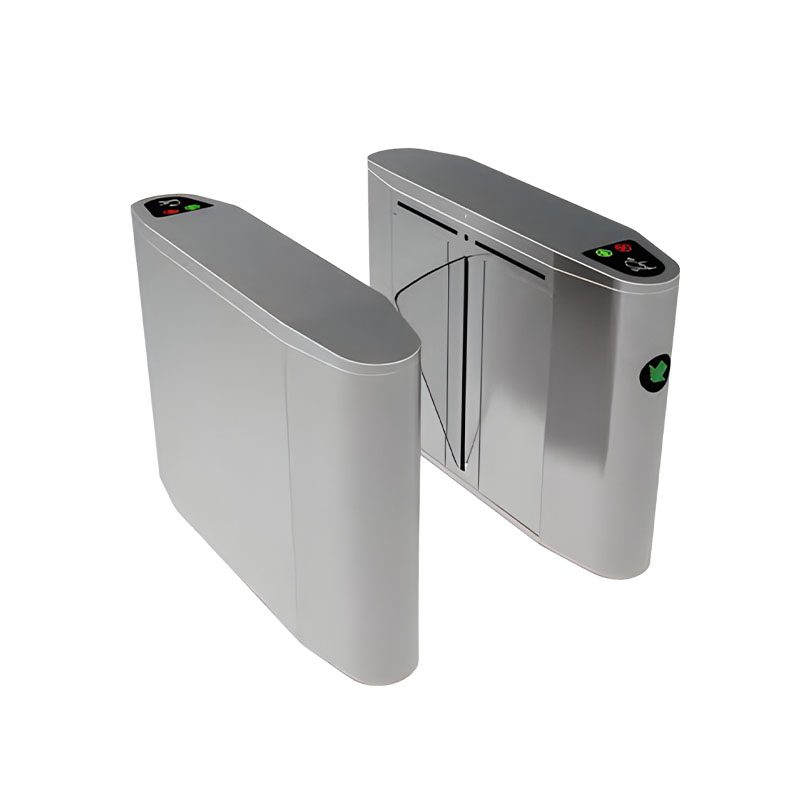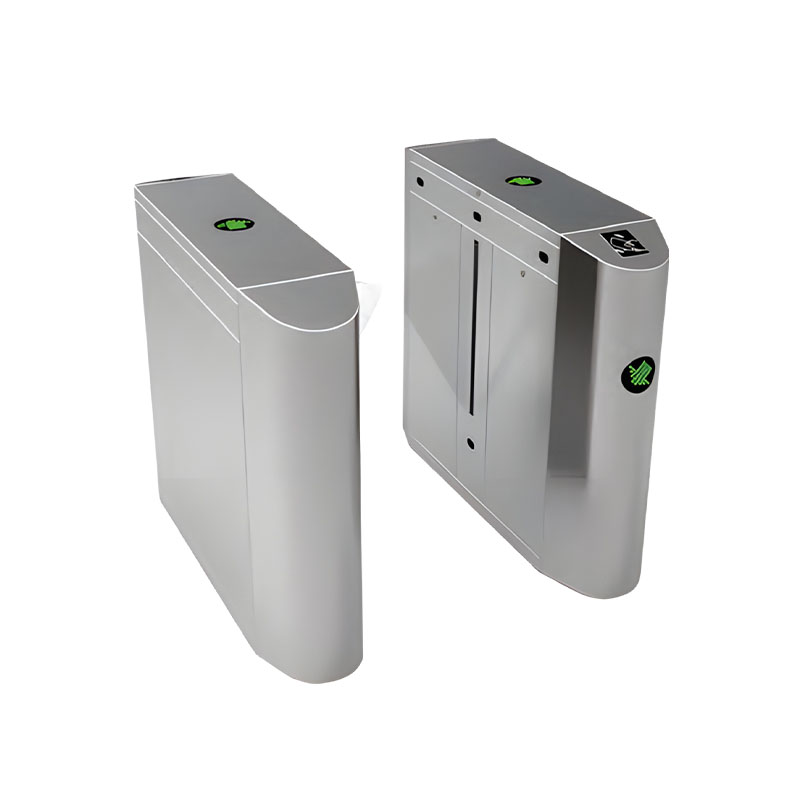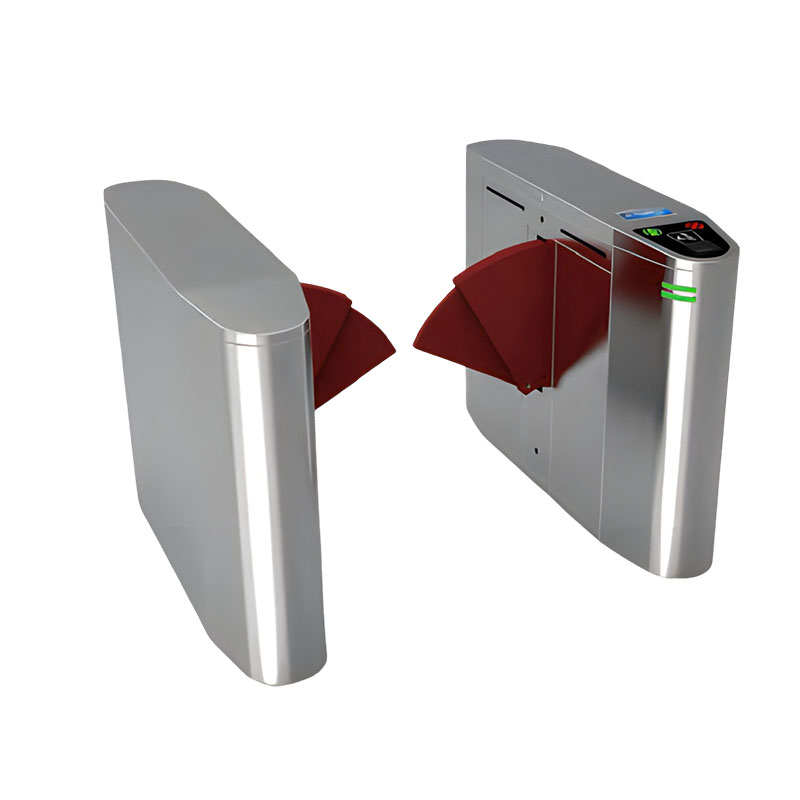How do anti-tailgating detection and anti-pinch sensors work together to ensure efficient passage while safeguarding pedestrian safety and maintaining order?
Release Time : 2025-08-07
In the sophisticated network of modern urban public space and security management, pedestrian access gates have evolved from simple physical barriers to comprehensive control systems integrating intelligent identification, efficient passage, and aesthetic design. More than just a "gatekeeper" maintaining order and safety, they are also works of public art that blend mechanical engineering, electronics, and modern design. Their sleek lines and intelligent interaction quietly shape the experience of entering and exiting designated areas. Their inherent beauty stems primarily from their industrial design, which combines strength and elegance. Whether constructed from brushed stainless steel, high-strength glass, or composite materials, the gate's exterior is precision-machined and surface-treated, creating a refined texture and a sturdy visual impression. The overall design eschews the bulkiness and coldness of traditional iron fences, featuring sleek lines, sharp yet rounded corners, a stable base, and elegant and precise movement of the gate wings or swing arms. Whether in office building lobbies, subway stations, scenic area entrances, or smart communities, it blends into the environment with a professional and modern presence, creating a functional yet aesthetically pleasing feature.
The essence of the pedestrian access gate's innovation lies in its role as an "intelligent hub," enabling seamless passage and multiple security verification methods. Modern pedestrian access gates have transcended the simple function of mechanical locking, integrating multiple authentication methods such as facial recognition, fingerprint recognition, IC/ID card readers, QR code scanning, and even mobile phone NFC. With a simple swipe, scan, or glance, the system verifies the user's identity in milliseconds, and the gate flaps or swing arms open smoothly. The entire process is efficient, silent, and requires no physical contact, significantly improving traffic efficiency and hygiene. Its intelligence is also reflected in its multiple security mechanisms: anti-tailgating detection technology accurately identifies and prevents unauthorized individuals from following in. Anti-pinch sensors immediately stop or rebound the gate flaps if they detect an obstacle during closing, ensuring pedestrian safety. The automatic opening function upon power failure ensures unimpeded passage in emergencies. This design, which perfectly balances convenience and safety, demonstrates a profound understanding of user experience and public safety.
From an aesthetic perspective, the beauty of a pedestrian access gate lies in the unity of "order" and "harmony." Through physical guidance and intelligent control, it transforms chaotic pedestrian flows into orderly queues. This sense of order itself is a form of aesthetic appreciation for public spaces. Its exterior design strives to harmonize with the architectural environment. Whether it's the calming grandeur of a commercial building, the modern simplicity of a transportation hub, or the artistic ambiance of a cultural venue, the gate can be customized in material, color, and shape to achieve a harmonious symbiosis with the overall space. The use of highly transparent acrylic or glass ensures internal visibility and eases maintenance, while reducing the sense of visual enclosure and creating a more transparent space. At night, when illuminated, built-in LED indicators or ambient lighting strips outline the gate, clearly guiding traffic flow and adding a sense of technology and ceremony.
The pedestrian access gate is more than just a safety device; it is the nerve ending of intelligent space management. In smart campuses, intelligent buildings, or large-scale event venues, pedestrian access gates are deeply integrated with backend management systems, recording real-time traffic data and generating personnel flow reports, providing data support for security management, resource allocation, and operational decision-making. Their modular design also facilitates installation, maintenance, and functional expansion, adapting to the channel width and management requirements of different scenarios.
The pedestrian access gate, a smart guardian standing at the intersection of pedestrian flows, redefines the boundaries of access with its robust structure, smooth interaction, and intelligent "brain." With every precise identity verification and every secure gate opening and closing, it silently demonstrates that true innovation makes security management invisible and efficient, allowing the order and beauty of public spaces to coexist harmoniously through the power of technology. It is a silent guardian of order and convenience in modern urban civilization.
The essence of the pedestrian access gate's innovation lies in its role as an "intelligent hub," enabling seamless passage and multiple security verification methods. Modern pedestrian access gates have transcended the simple function of mechanical locking, integrating multiple authentication methods such as facial recognition, fingerprint recognition, IC/ID card readers, QR code scanning, and even mobile phone NFC. With a simple swipe, scan, or glance, the system verifies the user's identity in milliseconds, and the gate flaps or swing arms open smoothly. The entire process is efficient, silent, and requires no physical contact, significantly improving traffic efficiency and hygiene. Its intelligence is also reflected in its multiple security mechanisms: anti-tailgating detection technology accurately identifies and prevents unauthorized individuals from following in. Anti-pinch sensors immediately stop or rebound the gate flaps if they detect an obstacle during closing, ensuring pedestrian safety. The automatic opening function upon power failure ensures unimpeded passage in emergencies. This design, which perfectly balances convenience and safety, demonstrates a profound understanding of user experience and public safety.
From an aesthetic perspective, the beauty of a pedestrian access gate lies in the unity of "order" and "harmony." Through physical guidance and intelligent control, it transforms chaotic pedestrian flows into orderly queues. This sense of order itself is a form of aesthetic appreciation for public spaces. Its exterior design strives to harmonize with the architectural environment. Whether it's the calming grandeur of a commercial building, the modern simplicity of a transportation hub, or the artistic ambiance of a cultural venue, the gate can be customized in material, color, and shape to achieve a harmonious symbiosis with the overall space. The use of highly transparent acrylic or glass ensures internal visibility and eases maintenance, while reducing the sense of visual enclosure and creating a more transparent space. At night, when illuminated, built-in LED indicators or ambient lighting strips outline the gate, clearly guiding traffic flow and adding a sense of technology and ceremony.
The pedestrian access gate is more than just a safety device; it is the nerve ending of intelligent space management. In smart campuses, intelligent buildings, or large-scale event venues, pedestrian access gates are deeply integrated with backend management systems, recording real-time traffic data and generating personnel flow reports, providing data support for security management, resource allocation, and operational decision-making. Their modular design also facilitates installation, maintenance, and functional expansion, adapting to the channel width and management requirements of different scenarios.
The pedestrian access gate, a smart guardian standing at the intersection of pedestrian flows, redefines the boundaries of access with its robust structure, smooth interaction, and intelligent "brain." With every precise identity verification and every secure gate opening and closing, it silently demonstrates that true innovation makes security management invisible and efficient, allowing the order and beauty of public spaces to coexist harmoniously through the power of technology. It is a silent guardian of order and convenience in modern urban civilization.







